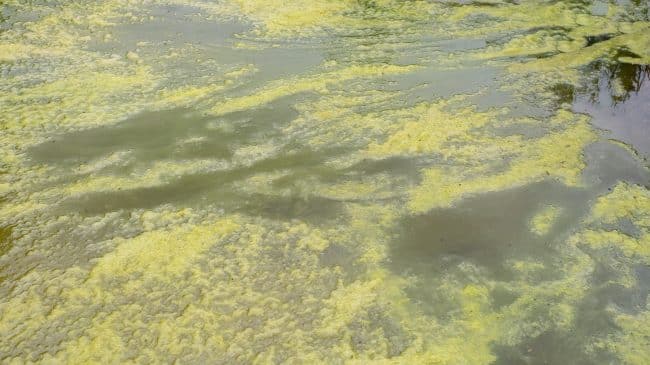Restoration of Florida’s water bodies, including Lake Okeechobee and the wider Everglades region, is among the state’s longest-standing and most contentious challenges. Florida Gov. Ron DeSantis recently appointed a Blue-Green Algae Task Force with the goal of expediting restoration. Last month, the task force released a draft report of their recommendations. The report was largely spot-on with its recommendations, but lawmakers must prioritize the allocation of scarce state resources and cooperate with local governments and federal agencies where appropriate.
Blue-green algal blooms are an increasingly common occurrence in water bodies around the state. The toxic algae cause significant ecological damage and pose health risks for humans. Blooms are caused by nutrient pollution — particularly in Lake Okeechobee. Decades of misguided infrastructure projects and water mismanagement require high-volume freshwater discharges from the lake to the coast through the St. Lucie and Caloosahatchee rivers. Nutrients are carried by these discharges, spreading algae throughout the state.
Agriculture, septic systems, wastewater treatment plants, and availability of data are among the major problems which the task force identified over the course of four meetings in the past few months. Their recommendations address these issues directly, including calls for strategic project selection and assessment of project effectiveness.
Agricultural Best Management Practices (BMPs) are the primary tool to reduce nutrient pollution from agricultural sources. BMPs include a variety of cost-effective measures producers can take to conserve water and prevent runoff into vulnerable water bodies. However, only 75 percent of producers in the Lake O watershed are enrolled in BMPs despite statutory requirements. Agricultural activity in environmentally-sensitive areas results in externalities that justify the mandatory implementation of BMPs. Enforcement has been more focused on the Everglades Agricultural Area south of the lake where BMPs have resulted in substantial nutrient reductions. The task force recommends increased enrollment in BMPs and the implementation of an onsite sampling program to assess the effectiveness of sector-specific BMPs.
Failing onsite sewage treatment and disposal systems, or septic systems, are a major source of urban nutrient pollution. The state Department of Health currently has regulatory oversight of septic systems and does not consider ecological risks. The task force recommends broader oversight by the Department of Environmental Protection and the prohibition of septic systems in environmentally-sensitive areas. Septic systems pose a unique challenge in a state like Florida, and restrictions in particular environmentally-sensitive areas may be appropriate. However, the existing regulatory framework is highly restrictive and is preventing the implementation of innovative septic systems that reduce nitrogen seepage. Regulation should be relaxed to allow systems like these in rural areas where the extension of sewer service is not feasible.
Public wastewater systems are also susceptible to failures that contribute to nutrient pollution. Over 1.6 billion gallons of sewage were spilled in Florida over the last decade — 980 million gallons of which entered the state’s waterways. The most common causes of spills are power outages and large storms. The task force recommends the identification of emergency backup power sources for all lift stations constructed prior to 2003 among other wastewater infrastructure investments. Florida’s growing population will continue to place pressure on public wastewater systems and infrastructure improvements will increasingly be necessary. Where possible, these improvements should be done through public-private partnerships to reduce public costs.
Finally, the task force made several recommendations involving improved monitoring, data collection, and project assessment. State and federal authorities have spent billions of dollars over recent decades on restoration projects, with limited assessment after completion. Restoration of Florida’s water bodies is critical to the environment, health and continued growth of the state. However, restoration should be accomplished as efficiently as possible. Improved monitoring and assessment are vital to achieving those goals. As the task force recommends, emphasis should be placed on high-impact, priority projects using a diverse portfolio of cost-efficient technologies.
The report was only the first draft of recommendations by the task force, but the repeated calls for cost-effective projects and science-based decision making were refreshing in the wake of decades of mismanagement. There was surprisingly little emphasis on the expansive set of infrastructure projects under the Comprehensive Everglades Restoration Project (CERP) which was discussed extensively during the task force meetings. Future reports from the task force may address CERP more directly. While the task force’s recommendations were otherwise sound, they should not be interpreted by lawmakers as justification for excess regulation or spending.
This column originally appeared in the Palm Beach Post.

